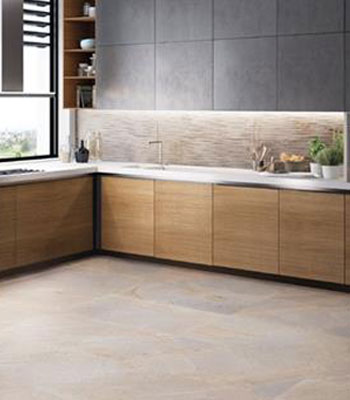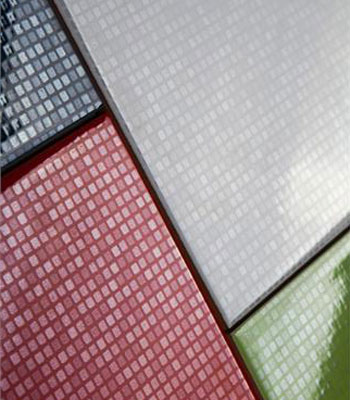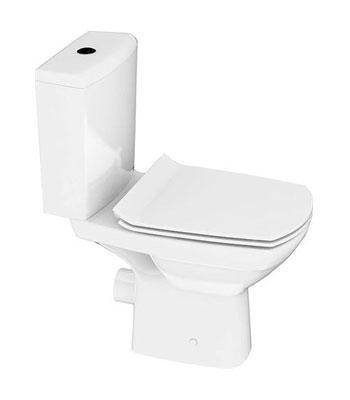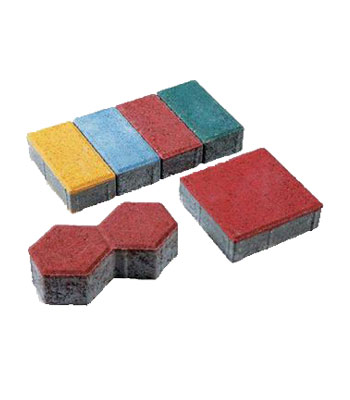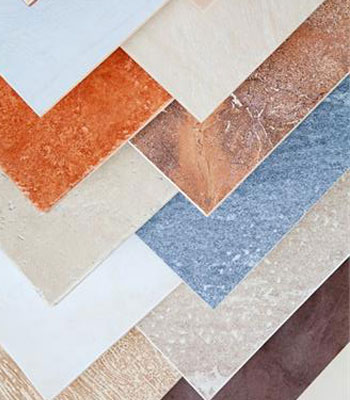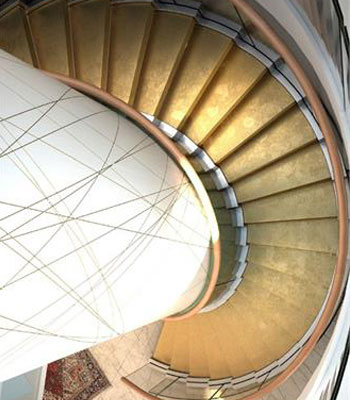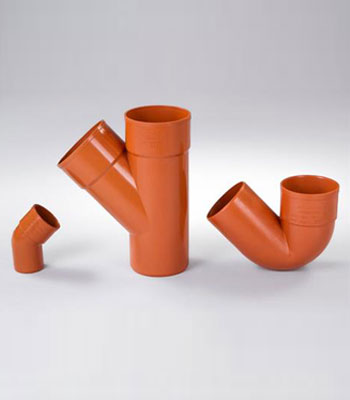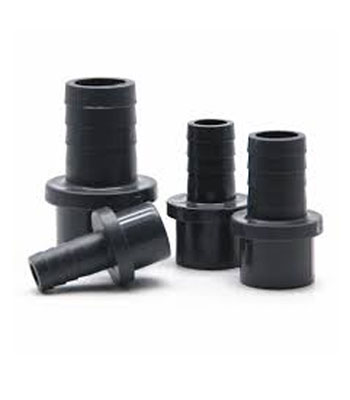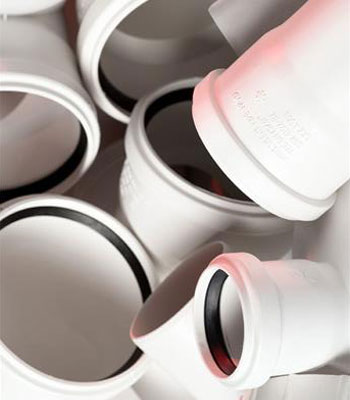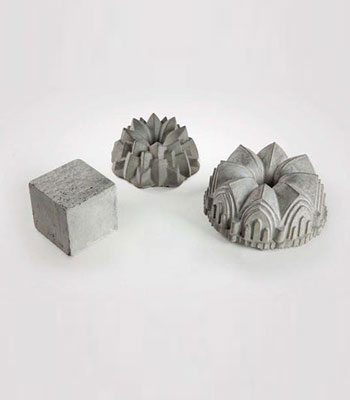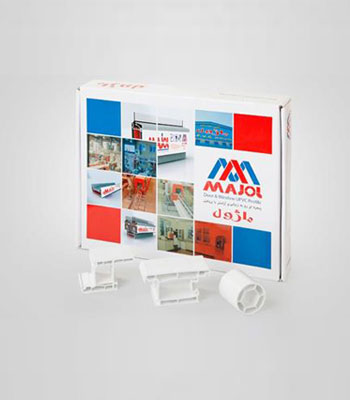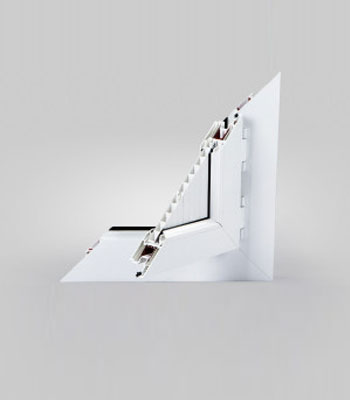Antibacterial Ceramic
$0.00Introduction
Ceramics due to having excellent chemical stability, as well as good appearance are widely used in different places such as hospitals and buildings. Ceramics, unfortunately, do not have antibacterial effect inherently, and the microorganisms reproduce easily on their surfaces, especially in wet environments. Regarding this, the need for frequent washing and the use of disinfectants is necessary. However, the use of these materials not only causes respiratory problems but also leads to the loss of cement and mortar between the ceramics. Therefore, the use of a ceramic which has inherent antibacterial properties can be effective in solving these problems. Zin oxide nanoparticles have antibacterial effect which can kill many types of bacteria. These nanoparticles penetrate into the cell walls of bacteria and microorganisms and prevent their growth and reproduction. These nanoparticles can be mixed with ceramic glaze as an additive.
Antibacterial Ceramic
$0.00Introduction
Ceramics due to having excellent chemical stability, as well as good appearance are widely used in different places such as hospitals and buildings. Ceramics, unfortunately, do not have antibacterial effect inherently, and the microorganisms reproduce easily on their surfaces, especially in wet environments. Regarding this, the need for frequent washing and the use of disinfectants is necessary. However, the use of these materials not only causes respiratory problems but also leads to the loss of cement and mortar between the ceramics. Therefore, the use of a ceramic which has inherent antibacterial properties can be effective in solving these problems. Zin oxide nanoparticles have antibacterial effect which can kill many types of bacteria. These nanoparticles penetrate into the cell walls of bacteria and microorganisms and prevent their growth and reproduction. These nanoparticles can be mixed with ceramic glaze as an additive.
Antibacterial Ceramic
$0.00Introduction
Ceramics due to having excellent chemical stability, as well as good appearance are widely used in different places such as hospitals and buildings. Ceramics, unfortunately, do not have antibacterial effect inherently, and the microorganisms reproduce easily on their surfaces, especially in wet environments. Regarding this, the need for frequent washing and the use of disinfectants is necessary. However, the use of these materials not only causes respiratory problems but also leads to the loss of cement and mortar between the ceramics. Therefore, the use of a ceramic which has inherent antibacterial properties can be effective in solving these problems. Zin oxide nanoparticles have antibacterial effect which can kill many types of bacteria. These nanoparticles penetrate into the cell walls of bacteria and microorganisms and prevent their growth and reproduction. These nanoparticles can be mixed with ceramic glaze as an additive.
Antibacterial Tile
$0.00Introduction
Ceramic tiles due to having excellent chemical stability, as well as good appearance are widely used in different places such as hospitals and buildings. normally, the microorganisms reproduce easily on the ceramic tile surface, especially in wet environment. The silver-titanium nanocomposite particles have an antibacterial effect which can kill more than 650 different types of bacteria and they are not harmful to the environment and the human body. The silver-titanium nanocomposite particles along with silver ions in the ceramic glaze, penetrate the cell walls of bacteria and microorganisms and prevent their growth and reproduction. These nanoparticles can be mixed with ceramic glaze as an additive.
Antibacterial Tile
$0.00Introduction
Ceramic tiles due to having excellent chemical stability, as well as good appearance are widely used in different places such as hospitals and buildings. normally, the microorganisms reproduce easily on the ceramic tile surface, especially in wet environment. The silver-titanium nanocomposite particles have an antibacterial effect which can kill more than 650 different types of bacteria and they are not harmful to the environment and the human body. The silver-titanium nanocomposite particles along with silver ions in the ceramic glaze, penetrate the cell walls of bacteria and microorganisms and prevent their growth and reproduction. These nanoparticles can be mixed with ceramic glaze as an additive.
Antibacterial Tile
$0.00Introduction
Ceramic tiles due to having excellent chemical stability, as well as good appearance are widely used in different places such as hospitals and buildings. normally, the microorganisms reproduce easily on the ceramic tile surface, especially in wet environment. The silver-titanium nanocomposite particles have an antibacterial effect which can kill more than 650 different types of bacteria and they are not harmful to the environment and the human body. The silver-titanium nanocomposite particles along with silver ions in the ceramic glaze, penetrate the cell walls of bacteria and microorganisms and prevent their growth and reproduction. These nanoparticles can be mixed with ceramic glaze as an additive.
Antibacterial Toilet
$0.00Introduction
When using public restrooms, people are often worried about sanitary issues and their related illnesses. People are often sensitive to this issue, so they take special care when using and touching the equipment. Genital infections, fungal infections, skin sensitization and infectious, and microbial diseases are one of the most common causes of these bacteria. This product is an antibacterial squat toilet containing zinc oxide nanoparticles. The antibacterial toilet has surfaces which are resistant to bacterial growth. Sanitary products like wash basin are coated with materials which remove hazardous microorganisms, such as bacteria, viruses, fungi and other germs. In comparison with other metal oxides, the application of zinc oxide in biomedical and antiviral fields is due to its compatibility, solubility in alkaline environments, and terminated polar surfaces.
Antibacterial Toilet
$0.00Introduction
When using public restrooms, people are often worried about sanitary issues and their related illnesses. People are often sensitive to this issue, so they take special care when using and touching the equipment. Genital infections, fungal infections, skin sensitization and infectious, and microbial diseases are one of the most common causes of these bacteria. This product is an antibacterial squat toilet containing zinc oxide nanoparticles. The antibacterial toilet has surfaces which are resistant to bacterial growth. Sanitary products like wash basin are coated with materials which remove hazardous microorganisms, such as bacteria, viruses, fungi and other germs. In comparison with other metal oxides, the application of zinc oxide in biomedical and antiviral fields is due to its compatibility, solubility in alkaline environments, and terminated polar surfaces.
Antibacterial Toilet
$0.00Introduction
When using public restrooms, people are often worried about sanitary issues and their related illnesses. People are often sensitive to this issue, so they take special care when using and touching the equipment. Genital infections, fungal infections, skin sensitization and infectious, and microbial diseases are one of the most common causes of these bacteria. This product is an antibacterial squat toilet containing zinc oxide nanoparticles. The antibacterial toilet has surfaces which are resistant to bacterial growth. Sanitary products like wash basin are coated with materials which remove hazardous microorganisms, such as bacteria, viruses, fungi and other germs. In comparison with other metal oxides, the application of zinc oxide in biomedical and antiviral fields is due to its compatibility, solubility in alkaline environments, and terminated polar surfaces.
Concrete Pavement Block
$0.00Introduction
Concrete is unique in construction and it is only an exclusive product for trading; so it involves a significant share of research and development, and income in the industry to itself. Concrete, a multi-phase, complex and nanostructured material, is a composite structure mainly composed of cement and water. Nanoscience and nanoengineering of concrete are phrases which describe two essential approaches regarding the application of nanotechnology in concrete. Up to now, concrete has been primarily known as a structural material. Nanotechnology is capable of making a multi-functional material from concrete. Concrete can be nanoengineered by incorporating nanoscale building blocks, nanoparticles, nanotubes, etc.
Concrete Pavement Block
$0.00Introduction
Concrete is unique in construction and it is only an exclusive product for trading; so it involves a significant share of research and development, and income in the industry to itself. Concrete, a multi-phase, complex and nanostructured material, is a composite structure mainly composed of cement and water. Nanoscience and nanoengineering of concrete are phrases which describe two essential approaches regarding the application of nanotechnology in concrete. Up to now, concrete has been primarily known as a structural material. Nanotechnology is capable of making a multi-functional material from concrete. Concrete can be nanoengineered by incorporating nanoscale building blocks, nanoparticles, nanotubes, etc.
Concrete Pavement Block
$0.00Introduction
Concrete is unique in construction and it is only an exclusive product for trading; so it involves a significant share of research and development, and income in the industry to itself. Concrete, a multi-phase, complex and nanostructured material, is a composite structure mainly composed of cement and water. Nanoscience and nanoengineering of concrete are phrases which describe two essential approaches regarding the application of nanotechnology in concrete. Up to now, concrete has been primarily known as a structural material. Nanotechnology is capable of making a multi-functional material from concrete. Concrete can be nanoengineered by incorporating nanoscale building blocks, nanoparticles, nanotubes, etc.
Easy-Clean Granite Tile
$0.00Introduction
Contrary to the compact structure, the presence of surface cavities with nanometer and micrometer dimensions makes the tile sensitive to the stain and penetration of the contamination. Colloidal nano silica acts as a binder, polishing agent and coating to fill these pores and prevent the stains and dirt from penetrating into the surface.
Easy-Clean Granite Tile
$0.00Introduction
Contrary to the compact structure, the presence of surface cavities with nanometer and micrometer dimensions makes the tile sensitive to the stain and penetration of the contamination. Colloidal nano silica acts as a binder, polishing agent and coating to fill these pores and prevent the stains and dirt from penetrating into the surface.
Easy-Clean Granite Tile
$0.00Introduction
Contrary to the compact structure, the presence of surface cavities with nanometer and micrometer dimensions makes the tile sensitive to the stain and penetration of the contamination. Colloidal nano silica acts as a binder, polishing agent and coating to fill these pores and prevent the stains and dirt from penetrating into the surface.
Golden Steel Sheet for Facades
$0.00Introduction
The design of the facade is of great importance in every building, because it is the first part of the building to be exposed, and it will be very effective in creating the initial mentality of someone who enters the building. The use of special designs and colors in interior and exterior decoration is welcomed by manufacturers and buyers. One of the more recent designs is the use of golden elements made of stainless steel with TiN golden coatings. These ceramic coatings, in addition to the strength and mechanical properties, provide good corrosion resistance. There are different methods to apply TiN coatings on substrates. Arc-PVD is a kind of physical vapor deposition technique in which an electric arc is used to vaporize material from a cathode target. The vaporized material then condenses on a substrate and forms a thin film.
Golden Steel Sheet for Facades
$0.00Introduction
The design of the facade is of great importance in every building, because it is the first part of the building to be exposed, and it will be very effective in creating the initial mentality of someone who enters the building. The use of special designs and colors in interior and exterior decoration is welcomed by manufacturers and buyers. One of the more recent designs is the use of golden elements made of stainless steel with TiN golden coatings. These ceramic coatings, in addition to the strength and mechanical properties, provide good corrosion resistance. There are different methods to apply TiN coatings on substrates. Arc-PVD is a kind of physical vapor deposition technique in which an electric arc is used to vaporize material from a cathode target. The vaporized material then condenses on a substrate and forms a thin film.
Golden Steel Sheet for Facades
$0.00Introduction
The design of the facade is of great importance in every building, because it is the first part of the building to be exposed, and it will be very effective in creating the initial mentality of someone who enters the building. The use of special designs and colors in interior and exterior decoration is welcomed by manufacturers and buyers. One of the more recent designs is the use of golden elements made of stainless steel with TiN golden coatings. These ceramic coatings, in addition to the strength and mechanical properties, provide good corrosion resistance. There are different methods to apply TiN coatings on substrates. Arc-PVD is a kind of physical vapor deposition technique in which an electric arc is used to vaporize material from a cathode target. The vaporized material then condenses on a substrate and forms a thin film.
Hard UPVC Construction Sewage Fittings
$0.00Introduction
Unplasticized polyvinyl chloride (UPVC) is one of the lightweight polymers that have high strength and impact resistance. Pipes and fittings made of this material exhibit excellent resistance in corrosive environments. Nano-scale fillers due to their high specific surface area give these polymers unique properties. Addition of nanoparticles to the UPVC polymer improves its mechanical and physical properties. This product is a nanocomposite 90 degree elbow, in which the addition of nanoparticles has improved the impact resistance, thermal stability and Vicat softening temperature.
Hard UPVC Construction Sewage Fittings
$0.00Introduction
Unplasticized polyvinyl chloride (UPVC) is one of the lightweight polymers that have high strength and impact resistance. Pipes and fittings made of this material exhibit excellent resistance in corrosive environments. Nano-scale fillers due to their high specific surface area give these polymers unique properties. Addition of nanoparticles to the UPVC polymer improves its mechanical and physical properties. This product is a nanocomposite 90 degree elbow, in which the addition of nanoparticles has improved the impact resistance, thermal stability and Vicat softening temperature.
Hard UPVC Construction Sewage Fittings
$0.00Introduction
Unplasticized polyvinyl chloride (UPVC) is one of the lightweight polymers that have high strength and impact resistance. Pipes and fittings made of this material exhibit excellent resistance in corrosive environments. Nano-scale fillers due to their high specific surface area give these polymers unique properties. Addition of nanoparticles to the UPVC polymer improves its mechanical and physical properties. This product is a nanocomposite 90 degree elbow, in which the addition of nanoparticles has improved the impact resistance, thermal stability and Vicat softening temperature.
Hard UPVC Fittings
$0.00Introduction
Hard polyvinyl chloride (UPVC) is used to produce a wide range of plastic pipes and fittings. This material is remarkably resistant to chemical erosion and has a smooth interior surface which improves water flow. UPVC has high chemical resistance across its working temperature range, with a wide range of operating pressures. Due to some features including long-term strength, high stiffness and affordability, UPVC systems are widely used in plastic fittings and pipes. It has been demonstrated that the addition of nanoparticles significantly improves the strength and stiffness of UPVC.
Hard UPVC Fittings
$0.00Introduction
Hard polyvinyl chloride (UPVC) is used to produce a wide range of plastic pipes and fittings. This material is remarkably resistant to chemical erosion and has a smooth interior surface which improves water flow. UPVC has high chemical resistance across its working temperature range, with a wide range of operating pressures. Due to some features including long-term strength, high stiffness and affordability, UPVC systems are widely used in plastic fittings and pipes. It has been demonstrated that the addition of nanoparticles significantly improves the strength and stiffness of UPVC.
Hard UPVC Fittings
$0.00Introduction
Hard polyvinyl chloride (UPVC) is used to produce a wide range of plastic pipes and fittings. This material is remarkably resistant to chemical erosion and has a smooth interior surface which improves water flow. UPVC has high chemical resistance across its working temperature range, with a wide range of operating pressures. Due to some features including long-term strength, high stiffness and affordability, UPVC systems are widely used in plastic fittings and pipes. It has been demonstrated that the addition of nanoparticles significantly improves the strength and stiffness of UPVC.
Silent Sewage Pipes
$0.00Introduction
Silent Sewage Pipes
$0.00Introduction
Silent Sewage Pipes
$0.00Introduction
Structural Lightweight Concrete (NSLC-1230)
$0.00Introduction
Structural lightweight concrete has an in-place density on the order of 1400 to 1900 kg/m3 compared to normal-weight concrete with a density in the in the range of 2000 to 2400 kg/m3. For structural applications, the concrete strength should be greater than 17 MPa. The concrete mixture is made with lightweight coarse aggregate. In some cases, a portion or the entire fine aggregate may be a lightweight product. Lightweight aggregates used in structural lightweight concrete are typically expanded shale, clay or slate materials that have been fired in a rotary kiln to develop a porous structure.
Structural Lightweight Concrete (NSLC-1230)
$0.00Introduction
Structural lightweight concrete has an in-place density on the order of 1400 to 1900 kg/m3 compared to normal-weight concrete with a density in the in the range of 2000 to 2400 kg/m3. For structural applications, the concrete strength should be greater than 17 MPa. The concrete mixture is made with lightweight coarse aggregate. In some cases, a portion or the entire fine aggregate may be a lightweight product. Lightweight aggregates used in structural lightweight concrete are typically expanded shale, clay or slate materials that have been fired in a rotary kiln to develop a porous structure.
Structural Lightweight Concrete (NSLC-1230)
$0.00Introduction
Structural lightweight concrete has an in-place density on the order of 1400 to 1900 kg/m3 compared to normal-weight concrete with a density in the in the range of 2000 to 2400 kg/m3. For structural applications, the concrete strength should be greater than 17 MPa. The concrete mixture is made with lightweight coarse aggregate. In some cases, a portion or the entire fine aggregate may be a lightweight product. Lightweight aggregates used in structural lightweight concrete are typically expanded shale, clay or slate materials that have been fired in a rotary kiln to develop a porous structure.
UPVC Door and Window Profiles containing Nanoparticles
$0.00Introduction
UPVC Door and Window Profiles containing Nanoparticles
$0.00Introduction
UPVC Door and Window Profiles containing Nanoparticles
$0.00Introduction
UPVC Nanocomposite Profiles
$0.00Introduction
This product is unplasticized polyvinyl chloride (UPVC) nanocomposite profile containing nanoparticles. UPVC is among the widely used polymers in building construction which is the more suitable option compared to metal and wooden profiles due to features such as high durability and performance, easy formability, low thermal expansion, prevention of the energy loss and non-flammability. However, the brittleness and loss of color during exposure to UV radiation are some disadvantages of these profiles. as a solution, nanomaterials are added to the UPVC which improve the impact strength of the product.
UPVC Nanocomposite Profiles
$0.00Introduction
This product is unplasticized polyvinyl chloride (UPVC) nanocomposite profile containing nanoparticles. UPVC is among the widely used polymers in building construction which is the more suitable option compared to metal and wooden profiles due to features such as high durability and performance, easy formability, low thermal expansion, prevention of the energy loss and non-flammability. However, the brittleness and loss of color during exposure to UV radiation are some disadvantages of these profiles. as a solution, nanomaterials are added to the UPVC which improve the impact strength of the product.
UPVC Nanocomposite Profiles
$0.00Introduction
This product is unplasticized polyvinyl chloride (UPVC) nanocomposite profile containing nanoparticles. UPVC is among the widely used polymers in building construction which is the more suitable option compared to metal and wooden profiles due to features such as high durability and performance, easy formability, low thermal expansion, prevention of the energy loss and non-flammability. However, the brittleness and loss of color during exposure to UV radiation are some disadvantages of these profiles. as a solution, nanomaterials are added to the UPVC which improve the impact strength of the product.



